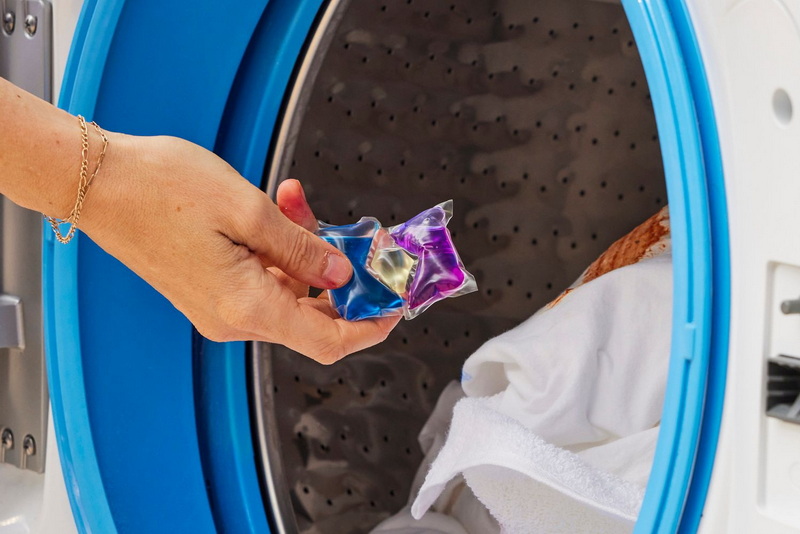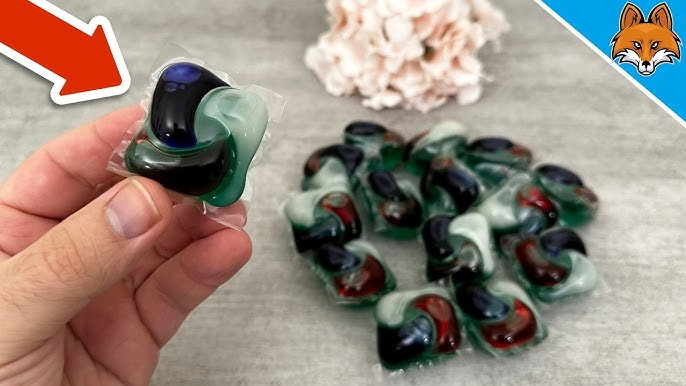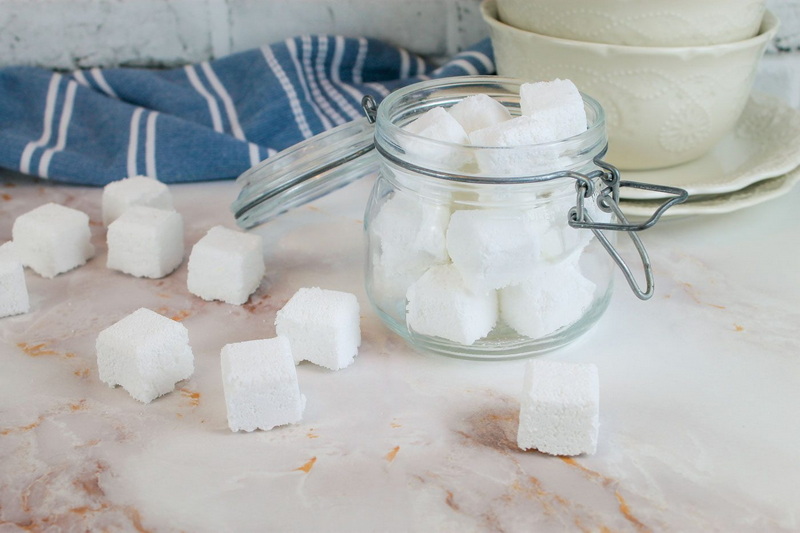Dongguan UFine Daily Chemical Co.,Ltd.
- All
- Product Name
- Product Keyword
- Product Model
- Product Summary
- Product Description
- Multi Field Search
Views: 222 Author: Tomorrow Publish Time: 11-02-2025 Origin: Site











Content Menu
● Understand the product and its design
● Optimize water temperature and load size
● Pre-treat stains to reduce re-wash cycles
● Combine pods with appropriate wash settings
● Load organization and dispenser usage
● Drying and storage considerations
● Practical strategies to stretch pod usage
● Alternatives and supplementation options
● Environmental and economic considerations
● Troubleshooting common issues
● Special considerations for hard water and temperature
>> 1. Are laundry pods suitable for all washing machines?
>> 2. Can I cut a laundry pod to extend usage?
>> 3. How can I maximize pod effectiveness on heavily soiled loads?
>> 4. What storage conditions preserve pod integrity?
>> 5. Will using a lower temperature reduce pod performance?
Stretching the use of laundry pods involves careful, safe practices that maximize detergent efficiency, reduce waste, and extend the life of each pod. This article provides practical strategies, soil-prepping steps, and best practices to help households make the most of laundry pods while maintaining clean, fresh results. The aim is to help readers understand when and how to use pods most effectively, without compromising fabric care or laundry outcomes.

- Laundry pods are pre-measured detergent units encased in a water-soluble film. They are designed to dissolve completely in the wash cycle, releasing cleaning agents in controlled amounts.
- Using pods as a substitute for all laundry loads may not always be ideal. Pods come in different formulations for Regular, High-Efficiency (HE), and specialized cycles. Ensure you select the correct pod type for the washing machine and fabric care needs.
- Reading the manufacturer's instructions is essential. Some pods are formulated for specific temperatures or soil levels, and deviating from guidance can affect performance and efficiency.
- Consider the formulation: pods may include enzymes, optical brighteners, or color-safe formulations. Understanding the active ingredients helps tailor use to specific stains and fabrics.
- Check the water hardness in your area. In very hard water, you might experience reduced cleaning efficiency and residue if the pod formulation isn't compatible with hard water. Some brands offer hard water variants.
- Use cold or warm water when appropriate. Many stains respond well to cold water with modern formulations; saving hot water reduces energy usage and can extend pod effectiveness when appropriate.
- Do not overfill the washing machine. Running full, properly loaded cycles promotes efficient use of the pod and reduces the risk of residue on clothes.
- For larger or heavily soiled loads, consider using a second, smaller amount of a second pod only if the manufacturer specifies compatibility. Otherwise, use an alternative product designed for heavy soils.
- Pre-soak option: If your washer has a pre-wash or soak setting, you can perform a brief pre-soak with cold water for stubborn stains before the main wash. This can improve performance without increasing detergent quantity.
- Temperature transitions: Some pods perform best when transitioning from a cold rinse to a warm main wash. If your machine features such options, leverage them to optimize cleaning efficiency while conserving energy.
- Treat stains promptly with a stain remover or a small amount of liquid detergent on tough spots. This reduces the need for extra wash cycles and helps pods work more efficiently.
- For greasy or oil-based stains, blot pre-treatment can help ensure the pod's enzymes reach the stain effectively without requiring extra detergent.
- For wine, fruit, or tannin stains, apply a stain remover and allow a brief set time before washing. This step minimizes the need for multiple washes.
- Ink and dye transfers: Use a color-safe pre-treatment, then wash with a pod suited for color protection to prevent color transfer or fading.
- Freshen the load: For lightly soiled items, a quick pre-treatment can help avoid unnecessary re-washing and still deliver satisfactory results.
- Select the correct wash cycle: Regular, Delicate, or Heavy Duty appropriately. Pods release detergents based on cycle timing and agitation patterns; match cycle settings to load type to maximize performance.
- If your machine offers a “high-efficiency” setting, use HE pods in HE machines. Non-HE pods can create excess suds and reduce cleaning efficiency.
- Spin speed matters: Higher spin speeds can help remove more water, reducing drying time and sometimes improving the effectiveness of the wash. Make sure the fabric care labels permit higher spin.
- Delicates and apparel fabrics: Use gentle cycles with appropriate temperatures to preserve fabric integrity. Some pods are formulated for delicate fabrics; verify labeling before use.
- Color care: When washing colored garments, choose a color-protecting pod if available and separate from whites to prevent color transfer.
- Pre-sort laundry by color, fabric type, and soil level. Sorting helps ensure the pod's performance aligns with the soil and fabric needs.
- Do not place pods directly on garments. Always place the pod in the drum or detergent dispenser as instructed by the manufacturer to ensure even distribution.
- Detergent drawers: If your machine uses a drawer dispenser, confirm that the pod or its contents will release correctly into the wash. Some washers are designed to accept pods directly into the drum rather than through the dispenser.
- For bulky items or towels, distribute the load evenly to prevent pods from sticking to one large item and to promote uniform dissolution.

- Store pods in their original, sealed packaging in a cool, dry place away from moisture and heat to preserve integrity.
- Do not place pods in damp environments or near moisture-prone areas. Moisture exposure can cause partial dissolution or loss of potency prior to use.
- Only use pods when you are ready to start the wash cycle to maintain pre-measured accuracy.
- Avoid extreme temperature fluctuations that could degrade the film or the detergent inside.
- Keep pods out of reach of children and pets. The concentrated formula can be harmful if ingested or contacted with eyes.
- Do not cut or unwrap pods. The coating is designed to dissolve in water during the wash cycle.
- If a pod comes into contact with skin or eyes, rinse thoroughly with clean water and seek medical advice if irritation persists.
- If a pod is accidentally ingested, seek immediate medical assistance and provide product packaging information to health professionals.
- Use the right pod size for the load. If multiple pod sizes exist for different load weights, choose the size that matches the load rather than using a larger pod to compensate.
- For lightly soiled loads, consider running shorter cycles or using a lower dose recommendation if the manufacturer allows, though many pods are pre-measured and not adjustable. Check product guidelines before attempting adjustments.
- Combine with appropriate amount of water by ensuring your washer is efficient and properly calibrated. Efficient machines use less water, which can affect how the pod dissolves and disperses.
- Consider using a second, smaller pod for large families if the manufacturer supports dual-pod usage in a single cycle. This can be more economical than upgrading to bulk formats, depending on the brand.
- For households with mixed loads, set up a routine: daily whites, weekly colors, and occasional heavy-duty loads with appropriate pre-treatment for stubborn stains to optimize pod use over time.
- If you notice residue on clothes, switch to a different pod formulation or adjust the wash temperature within manufacturer guidelines. Some residues indicate improper dissolution or incompatible water conditions.
- If you encounter frequent heavy soiling, supplement with a targeted stain remover on problem areas rather than increasing detergent quantity beyond recommended options.
- Consider slow-dissolving indicators or dual-dose designs offered by certain brands. Always follow manufacturer guidance to avoid residue or fabric damage.
- For households with very large families or high usage, evaluate whether a bulk detergent approach or a different format (e.g., liquid or powder) better suits your needs for cost efficiency and waste reduction.
- Powder or liquid alternatives can be used for spot treating persistent stains. Use these sparingly on top of the pod-based wash to maximize stain removal without overloading the system.
- Pods can reduce waste by eliminating the need for measuring cups, but ensure the packaging is recyclable or compostable where available.
- The cost per wash with pods varies by brand and usage. Compare the per-load cost against alternatives to determine if stretching pod use yields savings.
- Efficient washing practices, such as full loads and appropriate temperatures, contribute more to environmental goals than merely adjusting detergent usage.
- Recycling programs: Some packaging includes recyclable plastic and cardboard components. Verify local recycling guidelines before disposing of packaging.
- Persistent residue on clothing: Verify the pod is fully dissolved by ensuring water temperature and cycle are appropriate for the formulation. Consider switching to a different cycle or pod type if residue persists.
- Pods not dissolving completely: Check water temperature, machine water levels, and ensure the pod is not placed in an area obstructed by laundry. If persistent, switch to a different product or dose strategy per manufacturer guidance.
- Soapy buildup in washer: Regular maintenance, such as cleaning the detergent dispenser and running a maintenance wash, helps prevent suds buildup.
- Fading colors or fabric damage: Ensure you are using the correct pod formulation for colored fabrics and low-temperature washes. Prolonged exposure to high temperatures can affect dyes.
- In hard water areas, consider using a water conditioner or a pod designed for hard water to prevent mineral buildup and residue.
- Temperature compatibility: Some pods are optimized for specific temperatures. If you frequently wash at a temperature outside the pod's target range, your results may vary.
- Periodic maintenance: If you notice scale buildup in your washer, run an occasional descaling cycle to maintain optimal performance and pod effectiveness.
Stretching the use of laundry pods is feasible with mindful practices that align with product design, machine capabilities, and fabric care guidelines. By selecting the right pod, optimizing water temperature and load size, pre-treating stains, and using appropriate wash settings, households can maximize detergent efficiency, reduce waste, and maintain clean, fresh garments. Safe handling and proper storage further ensure pods remain effective and easy to use across daily laundry tasks.

Yes, but use the pod type recommended for your machine—HE pods for HE machines and standard pods for non-HE machines. Always follow the manufacturer's instructions.
No. Do not cut or unwrap pods. They are designed to dissolve as a single unit in the wash.
Pre-treat heavy stains and use an appropriate cycle. Pods are pre-measured; for very large or heavily soiled loads, consider a supplemented approach per brand guidance.
Store in a cool, dry place away from moisture and heat. Keep in original packaging and out of reach of children.
Some formulations work well in cold water, but always verify the pod's instructions. If a cold-water formula exists, it is typically designed to dissolve and clean effectively at lower temperatures.